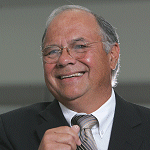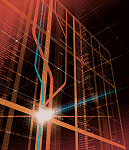Converging on the Future
 Visions for community colleges to prepare and graduate students for the
21st century global economy are only as viable as the infrastructure to
support them. In 2004, San Joaquin Delta College (CA) secured a $275
million bond for new construction. Lee Belarmino, vice president for
information technology, describes the converged network Delta built as part of the
new construction, which will serve as an enduring IT backbone for the college's longterm
growth, no matter what direction it takes.
Visions for community colleges to prepare and graduate students for the
21st century global economy are only as viable as the infrastructure to
support them. In 2004, San Joaquin Delta College (CA) secured a $275
million bond for new construction. Lee Belarmino, vice president for
information technology, describes the converged network Delta built as part of the
new construction, which will serve as an enduring IT backbone for the college's longterm
growth, no matter what direction it takes.
--"ONE OF THE MAJOR contributions we
in IT were able to make to the longterm
success of the new buildings
relates to what is now known as
structured cable design.
I had long believed that digital media--
voice, video, and data-- should share
the same wiring. But in addition to
that, I wanted all other low-voltage
systems to share that same
infrastructure. Those would include any
kind of control systems: Heating and
air conditioning, the alarm systems,
access control systems, security
cameras, fire systems, as well as the
telecommunications systems-- voice,
video, and data-- now are either digital
or are going digital soon, and
ultimately should run on the same
network. Traditionally, electrical
engineers want to set up
each of these systems
with its own separate
wiring, so it took an
enormous push on my
part to overcome that.
We in IT had to insist
strongly to them that we
were simply going to
converge
everything onto a
single network. But the
benefits have been
worth the effort we had
to put forward to get a
true converged network.
 "Now, we are constantly
seeing new advantages
unfold as we work with
the converged network.
For example, there are many 'smart
building' functions that are
enabled as separate systems 'talk' to
each other over the converged
network. Whenever you schedule a
class through the student information
system, it will automatically tell our
heating and air conditioning energy management
system about the
schedule for the classroom and handle
updates.
"Now, we are constantly
seeing new advantages
unfold as we work with
the converged network.
For example, there are many 'smart
building' functions that are
enabled as separate systems 'talk' to
each other over the converged
network. Whenever you schedule a
class through the student information
system, it will automatically tell our
heating and air conditioning energy management
system about the
schedule for the classroom and handle
updates.
"In terms of cost-effectiveness,
we've proven that having one
converged network is no more
expensive than allowing several
separate networks for different
systems, but the real return is not
having to maintain all the separate
wiring and media systems. Now all
these disparate systems can be
maintained on a single network by a
single group of us in IT. And with an eye to the future, we can't
possibly predict what kinds of systems
will be needed... just look at all that
has been introduced in the past 10
years. But now we'll be ready for
whatever is coming and able to merge
it onto the existing data network."
--Interview by Mary Grush
About the Author
Mary Grush is Editor and Conference Program Director, Campus Technology.